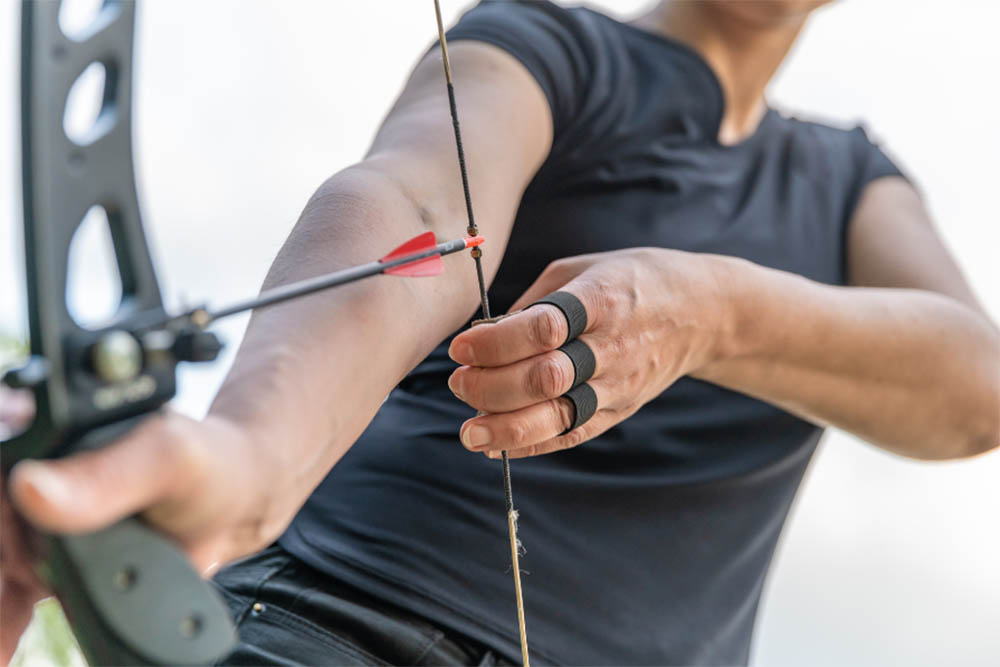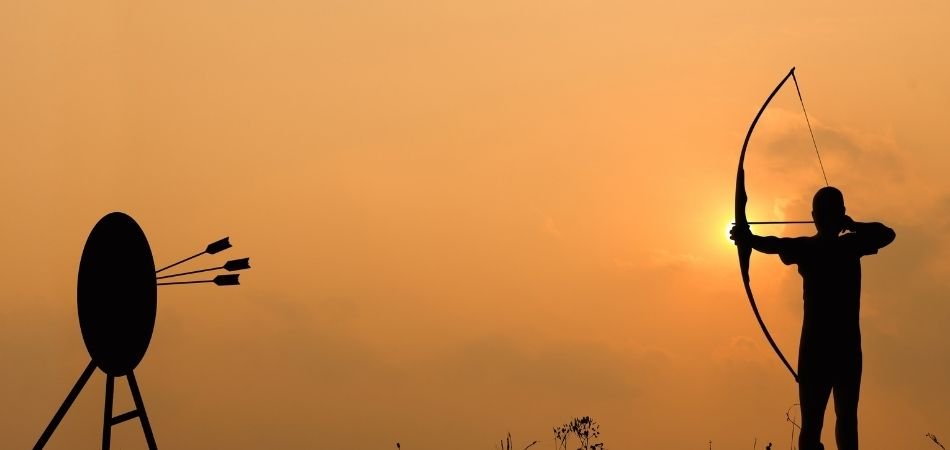String slapping is the occurrence when the bowstring hits your forearm when you release. It is very frequent among beginner archers. This can happen for a few reasons, although most of the time it is related to problems with form, although it can also be related to bow tuning, either of these issues can be fixed.
Regardless of whether or not your archery suffers with string slap, you should get an arm guard. This will protect your arm in the case that you do experience string slap. You should also try to correct your form, using simple proper gripping, elbow rotation, and in some cases opening your stance slightly more can help this. You should also be mindful of your brace height. Archery Edge is here to help you in detail:

Likewise, you can fix string slap depending on the cause of it. Sometimes this can be caused by gripping too hard, especially for beginners. Many people will grip the bow rise- which is the main handle in the middle of the bow- way too tightly, as if you are holding on for dear life.
If you grip the riser too tightly you may end up exerting a torque over it and rotating it inward which will in turn, cause string slapping.
You can easily fit this habit, simply by learning the proper grip style you should use. You should rest the handle of the riser on the fleshy pad below your thumb. Then place your thumb and index finger in a relaxed ‘V’ position.
Loosely grip the bow with these two fingers and ensure your grip is loose enough that you do not exert a torque over it and strong enough that the bow doesn’t thrust forward. Also keep your knuckles at a 45-degree angle with the vertical line of the riser.
Another common reason that you may get string slapping is the elbow rotation and shoulder position. There is a chance that you may inadvertently rotate your elbow inwards, thus moving your forearm inwards too.
If you are tense you may also raise your shoulder as well. This will then rotate your elbow. It can also happen as a result of fatigue or lack of concentration.
To correct this you will need to consciously lower your shoulder and rotate your elbow, with practice this will become an unconscious habit. As a beginner the best way to practice this is simply to check the shoulder and elbow position and try slowly rotating your elbow.
You and exercise this practice, do so by stepping in front of a wall with one foot between the wall and you, extend your bow arm and put your palm over the wall, pushing it. Rotate your elbow without rotating your shoulder or letting your arm leave the wall.
Another possible issue can be your stance, opening your stance may help you correct this issue. If you use square stance then your bow arm is in a straight line to the target which will increase your chances of string slap, to stop this, simply try opening your stance a bit.
Should your arm be straight when shooting a bow?
Over the years of practicing archery there have been many different practices that have changed over time. Some of these practices change due to being thought of as counterproductive or even possibly damaging to your shooting.

Some other practices were changed due to advancements made in the equipment. Techniques in the field of archery are ever-growing and adapting as we discover the newest and most efficient methods with which to shoot a bow with the latest compound bow designs.
As many things have changed in archery over the years, one of the things that has changed has been the positioning of your bow arm. Many years ago compound bows used to use round wheels instead of the more modern cam systems.
Archers did not use to have a definable stop to pull to, and past teaching advised you to shoot this bow from the middle of a valley, which is somewhere between the bow let-off and the back wall of the wheel.
Depending on what bow you have, and the bows draw cycle this could be rather long, so an archers’ technique would have to accommodate this. The easiest way to do this was to shoot with a pronounced bend in the bow arm so that you could adapt your draw length to suit your bows release position best.
As the advancements were made though, draw cycles became more efficient, valleys got shorter and stops harder. So, draw length became a set measurement and shooting with a straight bow arm became the most popular method of shooting a modern compound bow.
There is much science behind shooting with a straight bow arm. Your bow arm actually provides most of the direction for the shot and will take the force of the draw as well as the weight of the bow.
This means that shooting with the correct bone alignment and balanced muscle load will have a directly positive effect on your shot, or so it is believed.
You have three bones in your arm, the ulna and radius, and the humerus. During the shot these bones should be straight and totally aligned therefore directing the force of the shot straight through the center of these bones. Keep in mind that to do so, you will need to have sufficient muscle strength.
All this being said, although having a straight arm is preferable you should be cautious not to lock your bow arm from your elbow. If you do, it will put heavy pressure on your joint.
Hyperextending your elbow will disrupt the alignment of your bones, and it won’t only affect your arrows fight, by stopping you from performing a straight follow through as you push the bow towards the target when you release, but, doing so can also lead to injuries and that is the last thing anyone wants.
You should have a straight bow arm, but you should refrain from locking your arm at the elbow as this can be excessively problematic.

